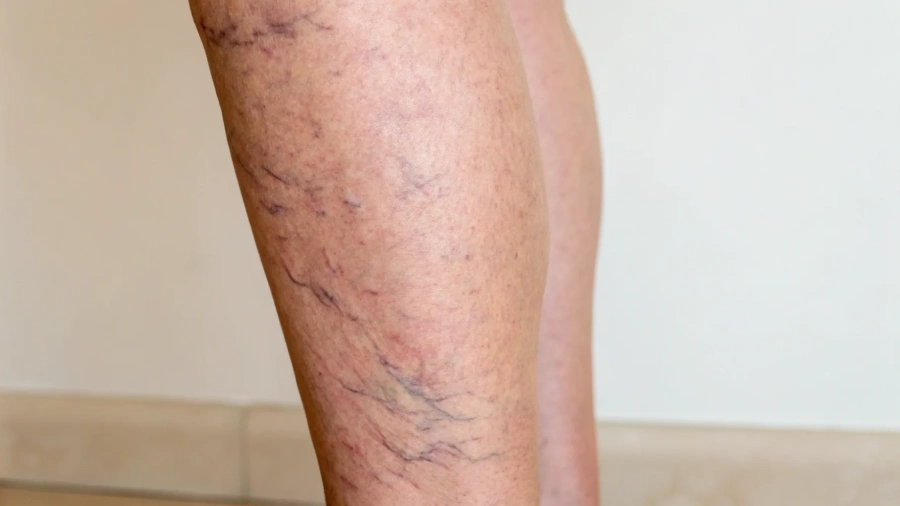Former President Donald Trump, 79, was recently diagnosed with chronic venous insufficiency (CVI) after experiencing swelling in his legs. The diagnosis was confirmed following a thorough medical evaluation conducted by the White House medical team. Although the condition is common, especially in older adults, it has sparked renewed public interest in circulatory health and how such conditions are diagnosed and managed.
In this article, we’ll explore what CVI is, what President Trump’s diagnosis means, and what others, particularly older adults, should know about the condition.
Table of Contents
What Is Chronic Venous Insufficiency?
Chronic venous insufficiency (CVI) is a condition where the veins in the lower extremities struggle to efficiently return blood back to the heart. Over time, this can cause blood to pool in the legs, leading to symptoms such as swelling, discomfort, and visible varicose veins. It is a common and generally benign condition, especially prevalent in individuals over the age of 70.
In the president’s case, the White House medical unit conducted a thorough evaluation after he noticed mild swelling in his lower legs. This included bilateral lower extremity venous Doppler ultrasounds, which ruled out more serious issues like deep vein thrombosis (DVT) and arterial disease.
Why Does Chronic Venous Insufficiency Occur?
Several risk factors contribute to the development of CVI, including:
- Aging: Vein valves weaken over time.
- Obesity: Increases pressure in the veins.
- Sedentary lifestyle: Long periods of sitting or standing can hinder blood flow.
- Genetics and overall health: Can also play a role.
In President Trump’s case, age, body composition, and a lifestyle that often involves prolonged travel or sitting likely contributed to the diagnosis.
Medical Evaluation and Findings
After noticing mild swelling in his lower legs, President Trump underwent a thorough evaluation by the White House medical team. The assessment included:
- Venous Doppler ultrasounds: Checked for blood flow and ruled out blood clots.
- Blood tests: Including CBC, metabolic panels, and clotting factors.
- Echocardiogram: Evaluated heart structure and function.
- BNP levels: Measured for signs of heart failure.
All test results came back normal. No evidence of deep vein thrombosis (DVT), arterial disease, or heart failure was found. The medical team concluded that the swelling was due to benign CVI.
Understanding the Importance of Ruling Out DVT
One of the main concerns with leg swelling is the possibility of deep vein thrombosis, a dangerous blood clot that forms in deep veins—most commonly in the legs. DVT can lead to a pulmonary embolism if clots break free and travel to the lungs, which can be life-threatening.
Emergency physician Dr. Jeremy Faust explains that while CVI is generally benign, symptoms warrant careful evaluation to exclude DVT. The balance between blood clotting and thinning is delicate, and clots forming in the veins require timely medical intervention.
Why Minor Bruising Is Not a Concern
Recent photos of President Trump showed minor bruising on the back of his hand. This was attributed to frequent handshaking combined with aspirin use, which is part of his cardiovascular prevention regimen. Aspirin can cause minor soft tissue irritation and bruising, a well-known and harmless side effect.
What Does This Mean for Older Adults and Those with Similar Conditions?
While the diagnosis of chronic venous insufficiency is generally not alarming, it is important to recognize that it can be a sign of underlying issues affecting circulation. Cardiologist Dr. Bernard Ashby highlights the need to consider other factors that might contribute to leg swelling, such as:
- Heart failure or elevated heart pressures
- Kidney disease
- Sleep apnea, which can raise pulmonary blood pressure
- Obesity and inactivity, both of which contribute to swelling
For individuals with CVI, especially those with risk factors like obesity, age, and sedentary lifestyles, ongoing medical evaluation is key to understanding the root causes and managing symptoms effectively.
Management and Lifestyle Considerations
Management of chronic venous insufficiency often includes:
- Compression stockings: Improve blood return to the heart
- Regular exercise: Walking and leg movement help circulation
- Elevating legs: Reduces pooling of blood
- Weight management: Reduces vein pressure
- Addressing underlying conditions: Like hypertension or sleep apnea
Given the president’s active travel schedule and lifestyle, these factors are especially relevant to maintaining vascular health.
FAQs About Chronic Venous Insufficiency
What symptoms indicate chronic venous insufficiency?
Common symptoms include leg swelling, heaviness, aching, varicose veins, and skin changes such as discoloration. These symptoms often worsen with prolonged standing or sitting.
Is chronic venous insufficiency dangerous?
By itself, CVI is generally a benign condition. However, it can lead to complications like skin ulcers or be a sign of other circulatory problems that require medical attention.
How is chronic venous insufficiency diagnosed?
Diagnosis typically involves a physical exam and imaging tests such as venous Doppler ultrasounds to evaluate blood flow and detect any blood clots.
Can lifestyle changes improve chronic venous insufficiency?
Yes, lifestyle modifications like exercise, weight loss, and wearing compression stockings can help alleviate symptoms and improve vein function.
When should I see a doctor for leg swelling?
If swelling is sudden, severe, or accompanied by pain, redness, or warmth, seek immediate medical care to rule out serious conditions like deep vein thrombosis.
Conclusion
President Trump’s diagnosis of chronic venous insufficiency following leg swelling highlights a common circulatory condition that affects many older adults. Thanks to a comprehensive medical evaluation, serious complications such as blood clots and heart failure were ruled out, reaffirming the benign nature of his condition. For individuals experiencing similar symptoms, understanding the causes, risks, and management options of CVI is essential to maintaining vascular health and preventing complications.
For more detailed insights and expert commentary on this topic, watch the full report from CNN embedded above.
This article is based on expert analysis and reporting by CNN, featuring insights from emergency physician Dr. Jeremy Faust and cardiologist Dr. Bernard Ashby.




